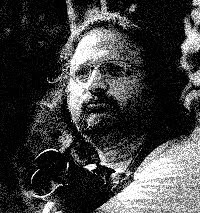Definition:
There is nothing called “Mega-Macro”, but I have coined this term to describe a situation where we photograph subjects at a ratio of more than 1:1! Normal macro is when we shoot at magnification ratio of 1:1 magnification ratio, that is the 1 cm of the subject is produced on the sensor as 1cm. In “Mega-macro” we record a subject of 1cm as more than 1cm on the sensor. What “Mega-Macro” does is it allows a Photo artist to capture a world that is not seen with the naked eye and it acts a super study material for scientists and entomologists.
Tools and techniques:
There are several ways you can achieve this some of them are given below:-
Use close-up filters on normal macro lens:
This is the easiest method and not that expensive, you can buy and use filters on 1:1 macro lens. This will let u go closer and thus obtain higher magnification. The results will not be as impressive but this is definitely cheaper than buying a lens. This option also reduces number of equipment needed to be carried.
Use Extension tubes or Bellows
This involves loading the lens on a below or using extension tube. This reduces the amount of light available as the length increases. This is a less preferred method but if you can control lighting you can try this!
Lens reversal:
This is done by reversing, preferably, a wide angle lens in front of a longer lens ( Murali mentioned that Mark Polanski uses this technique !!!), this method can yield very high magnification ( Sometimes 20:1 ). Here the results can be better than the close-up filters, but here there can be problems of vignetting and you will have to fore go AF ( Who cares I always override AF while shooting macro ;-) ).
I’ve seen Anne ( Nagraj doing this )
Usage of a Super Macro Lens :
This is the best easiest thing to do! And you get best results! Find a super macro lens that provides more than 1:1 ratio.
Example: Canon MP-E 65 mm f/2.8. This lens lets you take up to 5:1 macros but it costs a fortune.
I’m not sure whether Nikon / Pentax have such lenses. If somebody knows please update me ;-)
Some Tips
Lighting: Reduction in light dues to these techniques also implies artificial lighting is very important in super macro photography. Use external flashes; it will be convenient to use a ring flash. If there is lighter to work with the image can be captured much better.
Stability: The high amounts of magnification mean that you will need very high stability; this means you will need a very steady tripod and a remote release will help. Another feature you will benefit from would be live view to increase stability.
DOF: Mega-Macro implies more importance to DOF; which forces the photographer to make a critical decision on his focusing point. And the reduction in light dues to these techniques also implies it is difficult to work working at higher f-stops. One method would be to take multiple images with varying areas in focus and combine them to get the desired image (Its called composting contact Murali for more details / training).
Still Subject: Any subject that does not move helps. Live insects keep moving so have patience; if you find a dead one use it (Please don’t kill it for photography sake as we cannot take life as we cannot give one).
POV: POV is important in Mega-Macros also. The angle the framing everything counts. When working at high magnification it can be a very precise maneuver that sets it right or makes it all wrong, using of geared head helps to precisely move the setting.
you can see some of the Mega_marco's of M. Plonsky here http://www.mplonsky.com/photo/
To be cont..............
Regards,
Goutham R
More to come - Goutham R
My Pictures at Trek Nature
See more photos by goutham_ramesh on TrekNature
Friday, May 29, 2009
Subscribe to:
Comments (Atom)
